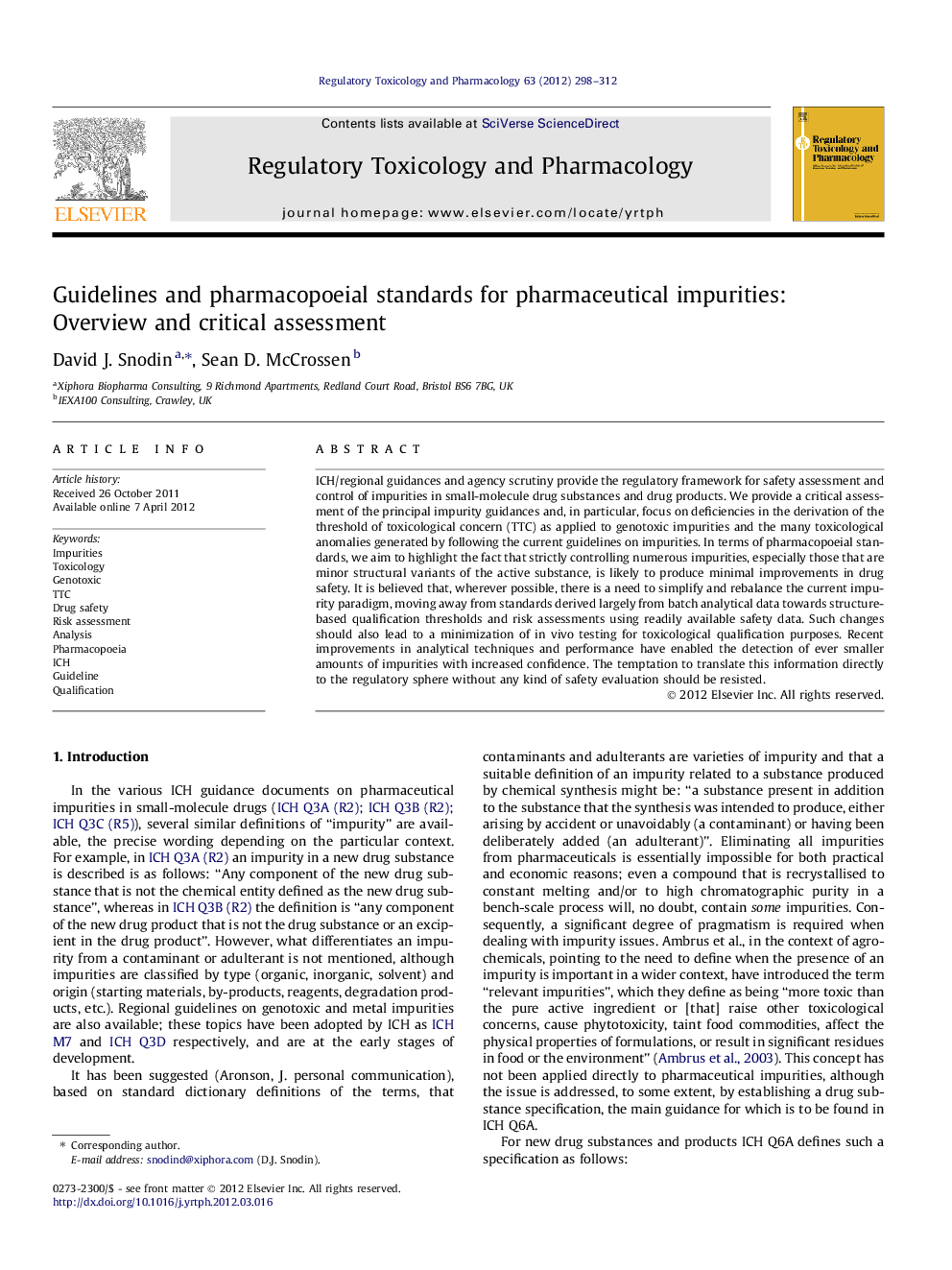| کد مقاله | کد نشریه | سال انتشار | مقاله انگلیسی | نسخه تمام متن |
|---|---|---|---|---|
| 5857406 | 1132003 | 2012 | 15 صفحه PDF | دانلود رایگان |

ICH/regional guidances and agency scrutiny provide the regulatory framework for safety assessment and control of impurities in small-molecule drug substances and drug products. We provide a critical assessment of the principal impurity guidances and, in particular, focus on deficiencies in the derivation of the threshold of toxicological concern (TTC) as applied to genotoxic impurities and the many toxicological anomalies generated by following the current guidelines on impurities. In terms of pharmacopoeial standards, we aim to highlight the fact that strictly controlling numerous impurities, especially those that are minor structural variants of the active substance, is likely to produce minimal improvements in drug safety. It is believed that, wherever possible, there is a need to simplify and rebalance the current impurity paradigm, moving away from standards derived largely from batch analytical data towards structure-based qualification thresholds and risk assessments using readily available safety data. Such changes should also lead to a minimization of in vivo testing for toxicological qualification purposes. Recent improvements in analytical techniques and performance have enabled the detection of ever smaller amounts of impurities with increased confidence. The temptation to translate this information directly to the regulatory sphere without any kind of safety evaluation should be resisted.
⺠Impurity guidelines critically assessed and toxicological anomalies highlighted. ⺠Derivation of TTC for genotoxic impurities considered over-conservative and biased. ⺠Use of SAR to rationalize impurity qualification and minimize in vivo testing. ⺠Optimizing impurity specifications by safety assessment and rebalancing quality-safety factors. ⺠Toxicologically based recommendations for simpler and more flexible pharmacopoeial monographs.
Journal: Regulatory Toxicology and Pharmacology - Volume 63, Issue 2, July 2012, Pages 298-312